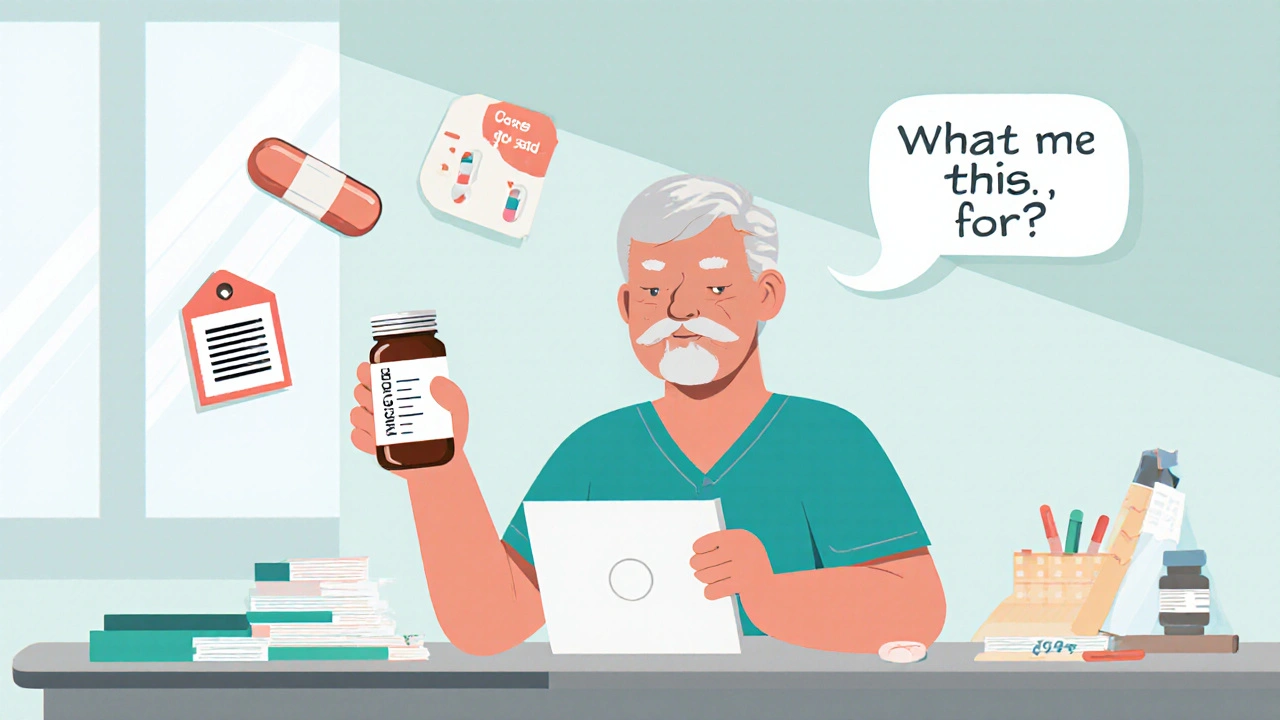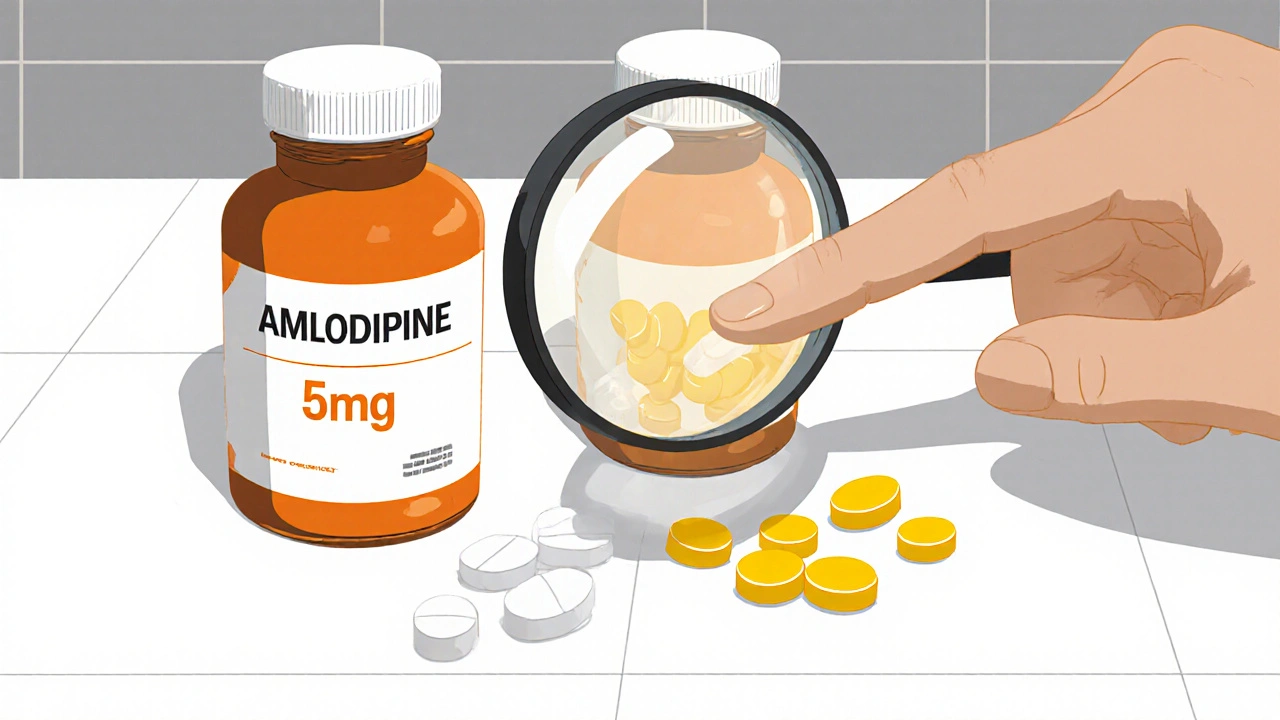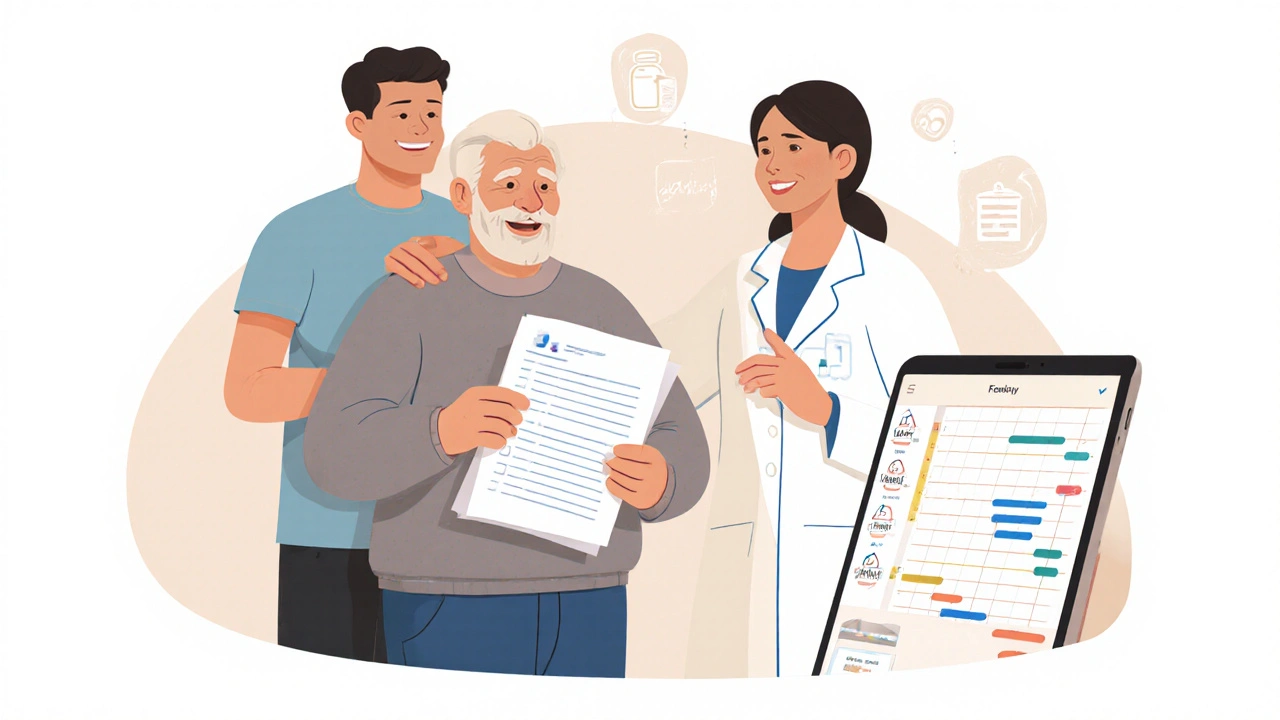
Every year, thousands of people in Australia receive the wrong medication-or the wrong dose-because a simple mistake slipped through at the pharmacy. It’s not because pharmacists are careless. It’s because the system is built to trust, not verify. And if you’re picking up a prescription, you’re the last line of defense. You don’t need to be a doctor. You don’t need to memorize drug names. But you do need a simple, personal safety checklist for pharmacy visits.
Why You Can’t Rely on the Pharmacist Alone
Pharmacists are trained professionals. They work under pressure. They handle dozens of prescriptions an hour. Even with double-check systems, errors happen. A pill that looks like another. A dosage typo. A refill for a drug you stopped taking months ago. These aren’t rare. In fact, studies show that up to 1 in 20 prescriptions filled in community pharmacies have some kind of error-most of them caught before they harm you, but not all. The truth? The pharmacy’s checklist is for them. Your safety shouldn’t depend on them remembering every rule, every patient, every interaction. You have a right-and a responsibility-to double-check what you’re taking home.Your Personal Safety Checklist: 5 Steps Before You Leave the Pharmacy
Here’s what you need to do every single time you pick up a prescription. Write it down. Stick it on your fridge. Save it in your phone. Use it like a seatbelt-every time.- Confirm the name on the label matches your full legal name-not just your first name, not a nickname. If the label says “A. Smith” and your name is “Alice Smith,” ask them to print your full name. This prevents mix-ups with other patients.
- Check the drug name against your prescription. If your doctor wrote “Metformin 500mg,” make sure the bottle says exactly that. Not “Metformin HCl.” Not “Glucophage.” Not “Metformin 1000mg.” If it’s different, ask why. Sometimes it’s a generic switch-but you need to know.
- Verify the dose and quantity. Is it supposed to be 1 tablet twice a day? Does the bottle have 30 tablets? If your doctor prescribed a 30-day supply and you got 90, that’s a red flag. Same if you’re getting 10mg instead of 5mg. Don’t assume it’s a mistake-ask.
- Compare the pill’s appearance to your last refill. Look at the shape, color, imprint code. If your old pills were small, white, and had “M 5” stamped on them, but the new ones are large, blue, and say “A 12,” that’s not normal. Even if the name is right, the pill looks wrong? Say something. Pills can be switched without notice.
- Ask: “What is this for, and what side effects should I watch for?” Don’t just take the leaflet. Ask the pharmacist to explain it in plain language. If they say, “It’s for high blood pressure,” and you don’t have high blood pressure, you’ve just caught a possible error. If they say, “It’s for diabetes,” but you’ve never been diagnosed? That’s your cue to call your doctor.
What to Do If Something Doesn’t Look Right
If any of the five steps above raises a red flag, don’t leave. Don’t say, “It’s probably fine.” Don’t take it home and worry about it later. Here’s what to do:- Ask to speak with the pharmacist directly. If the technician handed you the bottle, they might not have caught the mistake.
- Bring your old prescription bottle or a photo of it. Visual comparison helps.
- Call your doctor’s office. Have them confirm the prescription details. Most offices have a direct line for pharmacy questions.
- If you’re still unsure, don’t take the medication. Walk out. Call your doctor. Come back later. It’s better to be late than poisoned.
Keep a Medication List-Even If You Only Take One Drug
One of the biggest causes of dispensing errors is outdated or incomplete information. You might be taking five medications, but the pharmacist only sees one on the screen. Or worse-they see an old one you stopped. Create a simple list. Write down:- The name of each medication (brand and generic if different)
- The dose (e.g., 10 mg, 500 mg)
- How often you take it (e.g., once daily, twice a day)
- Why you take it (e.g., “for cholesterol,” “for pain”)
- The last time you refilled it

Use Technology-But Don’t Trust It Blindly
Apps like My Health Record (Australia’s national digital health system) and Medisafe can help. They store your meds, send reminders, and even flag interactions. But they’re only as good as what you put in. If you use an app:- Update it after every prescription change
- Don’t rely on it to catch dosage errors
- Still use your checklist. Apps can glitch. Pharmacies don’t always sync with them.
Special Cases: Controlled Drugs, High-Risk Medications, and Elderly Patients
Some medications are riskier than others. If you’re taking:- Warfarin, insulin, or opioids
- High-dose steroids or chemotherapy drugs
- Any drug with a narrow therapeutic window (small difference between safe and toxic dose)
- Ask: “Is this a high-risk medication? Do I need to come back for monitoring?”
What You Should Never Do
Avoid these common mistakes:- Never assume the pharmacy fixed your last error. Mistakes can repeat.
- Never take a medication just because “it looks the same as before.”
- Never skip the question: “What is this for?”
- Never feel embarrassed to ask. Pharmacists expect it.

Real Story: What Happened When Someone Used the Checklist
In Sydney, a 72-year-old woman picked up a new prescription for “Amlodipine 5mg” for her blood pressure. She checked the label: correct name. Checked the dose: correct. But when she compared the pill to her last bottle, the color was off-yellow instead of white. She asked the pharmacist. Turns out, the system had accidentally pulled a 10mg dose from another patient’s order. The pharmacist apologized, corrected it, and thanked her for catching it. She didn’t know the difference between 5mg and 10mg-but she knew the pill didn’t look right. That’s all it took.Final Thought: Your Safety Is Your Responsibility
Pharmacies are not perfect. Systems fail. People make mistakes. But you have more power than you think. You don’t need to be an expert. You just need to be careful. Use this checklist every single time. It takes 90 seconds. It could save your life.Do pharmacies in Australia have to use safety checklists?
Yes, Australian pharmacies are required to follow strict national standards for medication safety, including double-checking prescriptions, verifying patient identity, and documenting counseling. But these are internal procedures for pharmacists-not tools for patients. The law doesn’t require pharmacists to hand you a checklist or ask you to verify your meds. That’s why you need your own.
Can I get a printed copy of a pharmacy safety checklist?
No official patient-facing checklist exists in Australia. The Therapeutic Goods Administration (TGA) and Pharmacy Board of Australia provide guidelines for pharmacists, not patients. But you can print or save the 5-step checklist from this article and use it every time you visit a pharmacy.
What if I’m not sure if a medication is right for me?
If you’re unsure, don’t take it. Call your doctor or pharmacist and ask: “Is this medication still appropriate for me?” If you’re on multiple drugs, ask for a medication review. Many pharmacies offer free reviews for patients taking five or more medications. You can also ask your GP to refer you to a pharmacist for a comprehensive medication check.
Should I take my old pill bottles to the pharmacy?
Yes. Bringing your old bottles helps the pharmacist compare the new prescription to what you were previously taking. It prevents mix-ups between similar-looking drugs and confirms you haven’t been refilled incorrectly. If you don’t have the bottle, take a photo of the label on your phone.
Can I report a dispensing error?
Yes. If you receive the wrong medication or dosage, report it to the pharmacy manager. Ask them to document it. You can also report it to the Therapeutic Goods Administration (TGA) via their online portal. Reporting helps improve safety for everyone. Don’t assume it was just a one-time mistake-reporting stops it from happening again.

Rahul Kanakarajan
November 25, 2025 AT 10:29bro just trust the pharmacist lmao you think you're gonna catch a mistake by staring at a pill? i've been to 3 different pharmacies in the last year and every time they got it right. this checklist is overkill. you're gonna turn every pharmacy trip into a courtroom drama.
New Yorkers
November 26, 2025 AT 12:24you're not just checking pills-you're reclaiming your autonomy from a broken system that treats you like a data point. every time you ask 'what is this for?' you're not being paranoid-you're awakening. the pharmacy doesn't care about your life, only their KPIs. this checklist? it's your spiritual armor against the mechanized madness of modern healthcare.
David Cunningham
November 28, 2025 AT 10:36been doing this for years since my mum got the wrong blood pressure med back in '19. i always bring the old bottle, check the pill, ask the question. most pharmacists appreciate it honestly-they’re swamped. i even printed the checklist and laminated it. keeps it in my wallet next to my concession card. easy 90 seconds. saves stress. no drama, just common sense.
luke young
November 29, 2025 AT 06:44love this. i used to think i was being annoying asking questions until my aunt ended up in the hospital because they gave her a drug she was allergic to. now i do the checklist with my grandma every time. she doesn’t remember names but she remembers colors. so we just compare pills. simple. effective. no judgment. just care.
james lucas
November 29, 2025 AT 23:58ok so i just tried this checklist at my local chemist and honestly? the pharmacist looked at me like i was a robot who just walked in from the future. but then she smiled and said 'you’re the first person who actually checked the imprint code.' she even gave me a free lollipop. weirdly nice. i’m gonna start doing it every time. also i misspelled 'imprint' in my notes but whatever. the point is i’m doing it. small steps. big wins. also i saved the checklist on my phone under 'med check 2.0' so i don’t forget. ps: i’m not a doctor but i play one on reddit.
Michael Fitzpatrick
December 1, 2025 AT 06:39you know what’s wild? this whole checklist only takes 90 seconds, but it’s the kind of thing that could prevent you from ending up in the ER, or worse. i’ve seen people just grab their meds and walk out like it’s a coffee run. but medicine isn’t coffee. one wrong pill, one wrong dose, and your whole day changes forever. i don’t care if you think you’re too busy-this isn’t optional. it’s like buckling your seatbelt. you don’t wait until you’re in a crash to start doing it.
Justin Daniel
December 1, 2025 AT 07:25oh wow, so now we’re all pharmacy detectives? i love how this turned into a cult of vigilante pill-checking. but honestly? it’s kind of beautiful. the system’s broken, so we patch it with stubbornness and sticky notes. i’ve been using this for 8 months. my pharmacist now calls me 'the guy with the list.' i take it as a compliment. also, i printed this on a card and gave one to my mom. she’s 78 and thinks i’m a genius. she didn’t even know what an imprint code was before. now she checks it like a boss.
Jessica Correa
December 1, 2025 AT 11:39my dad took the wrong pill last year and ended up in the hospital for three days. we didn’t catch it because we trusted the pharmacy. after that i made a habit of checking everything. i don’t even think about it anymore. name dose pill color why am i taking this. done. it’s not hard. i used to feel weird asking but now i say it like i’m ordering a latte. 'hey can you confirm this is for my blood sugar?' they don’t blink anymore. just glad i didn’t wait until it was too late.